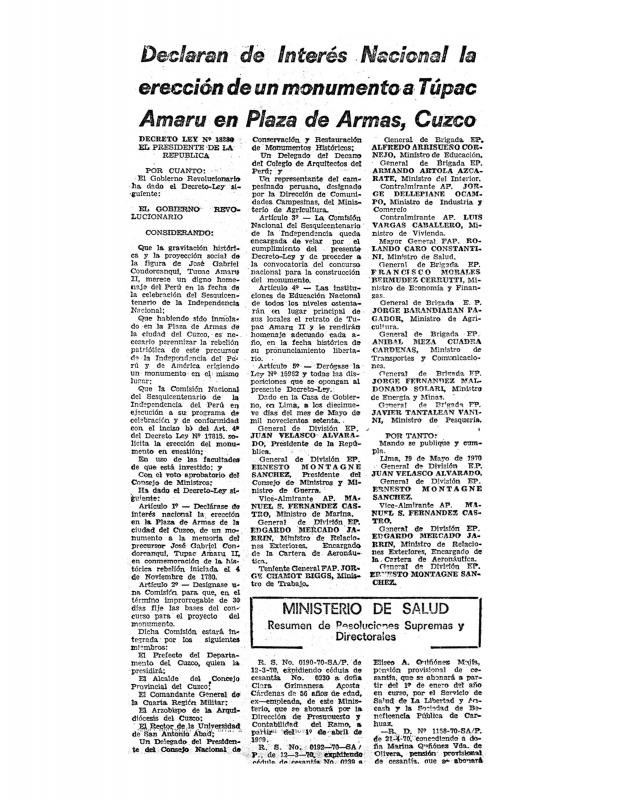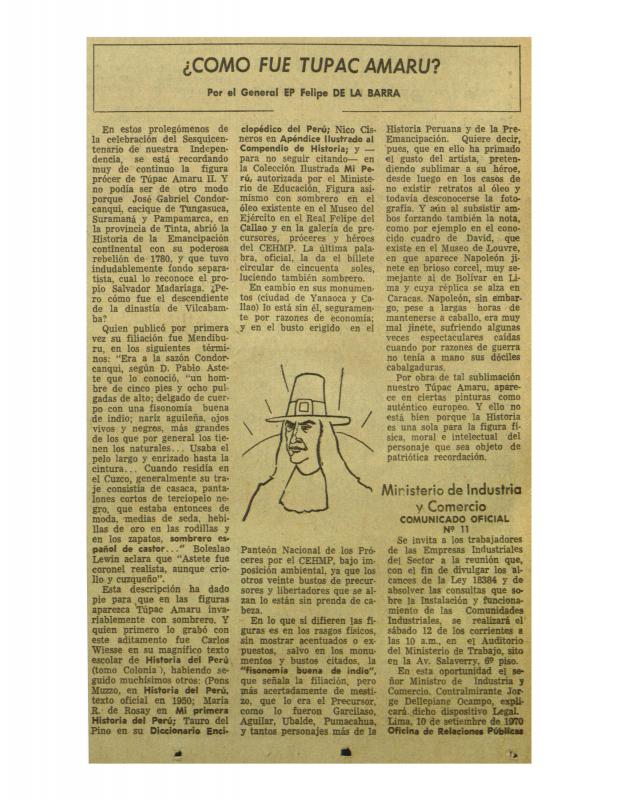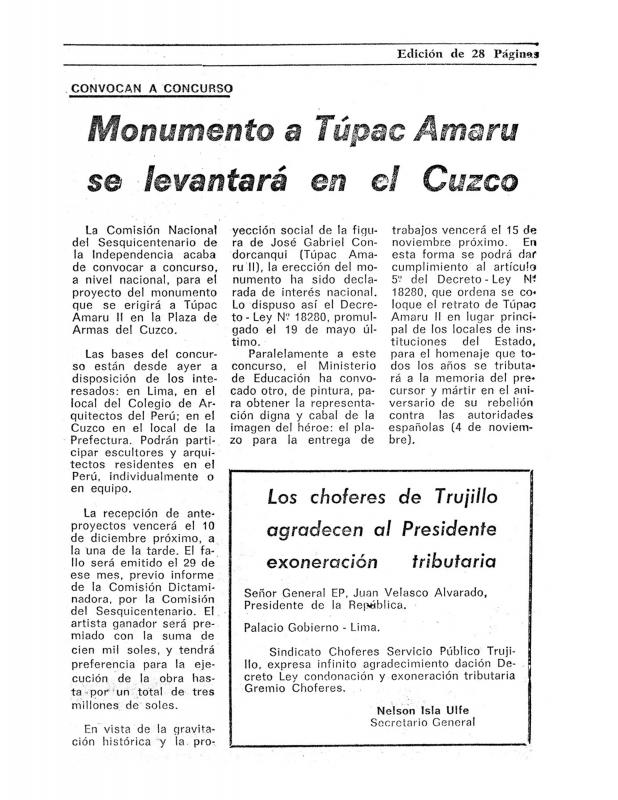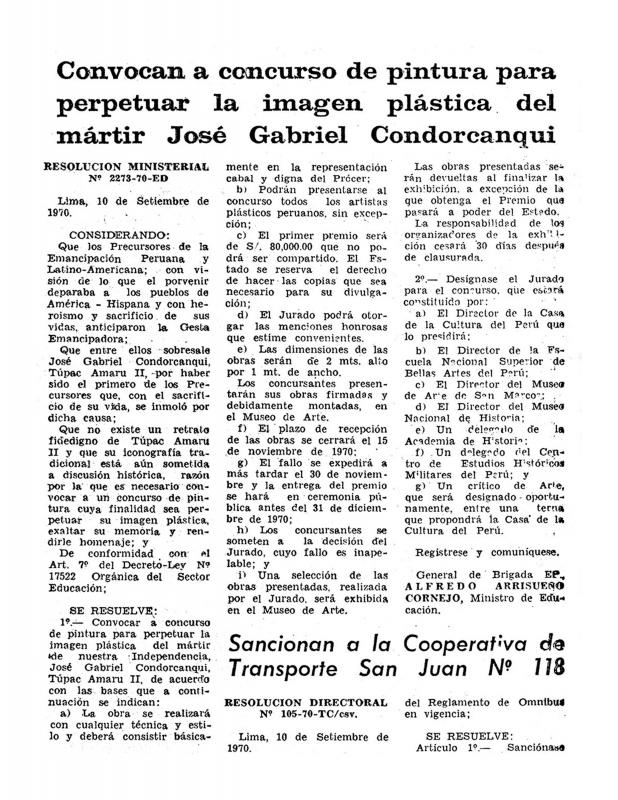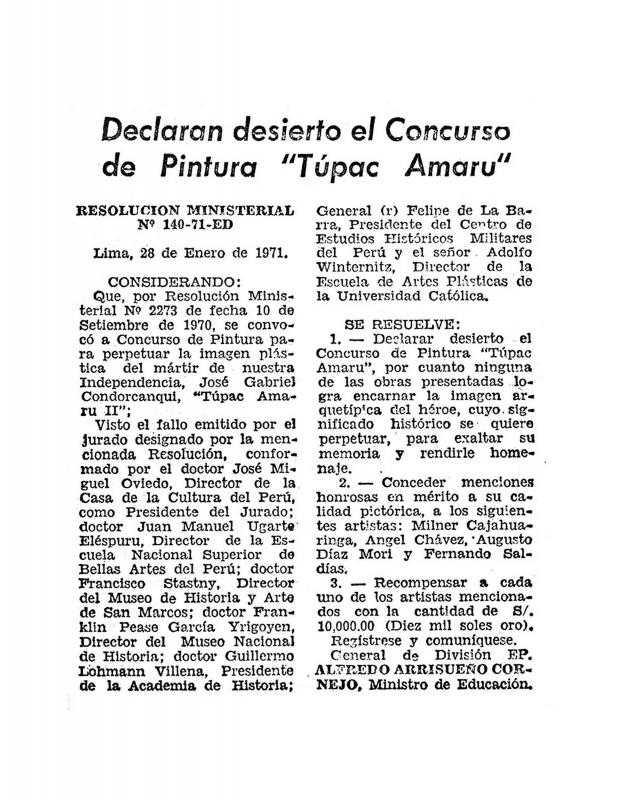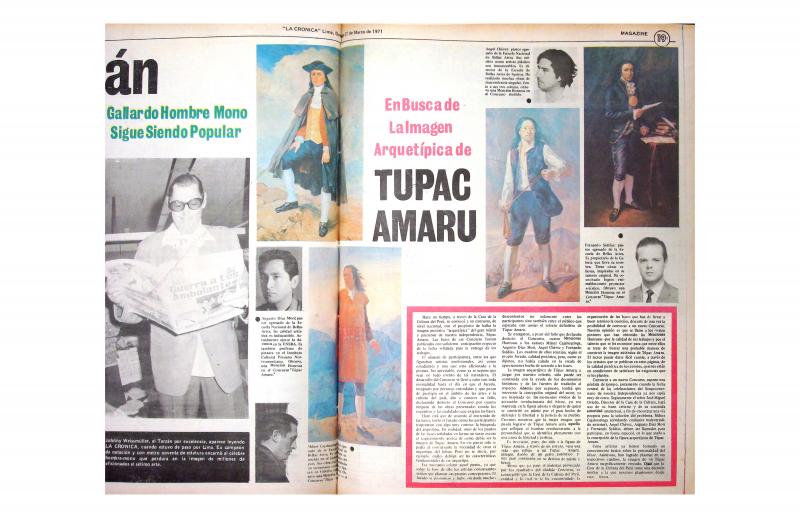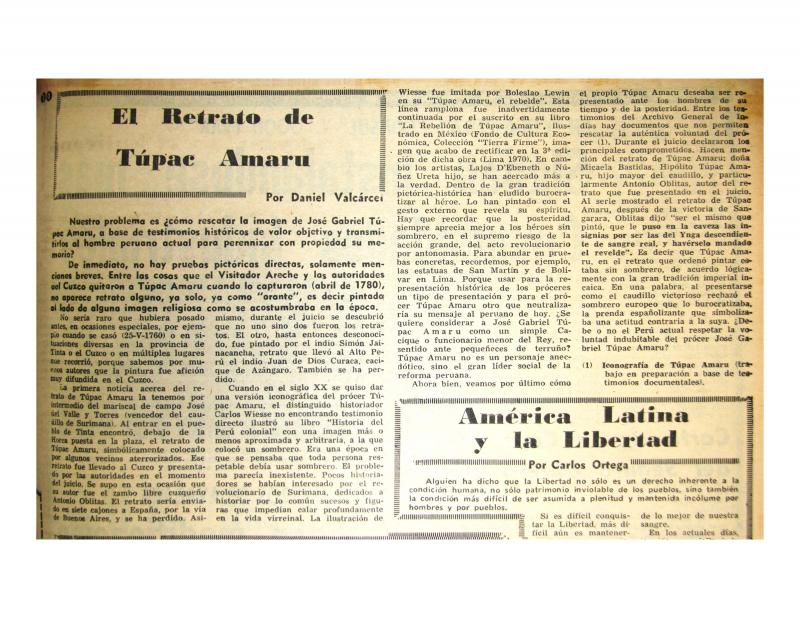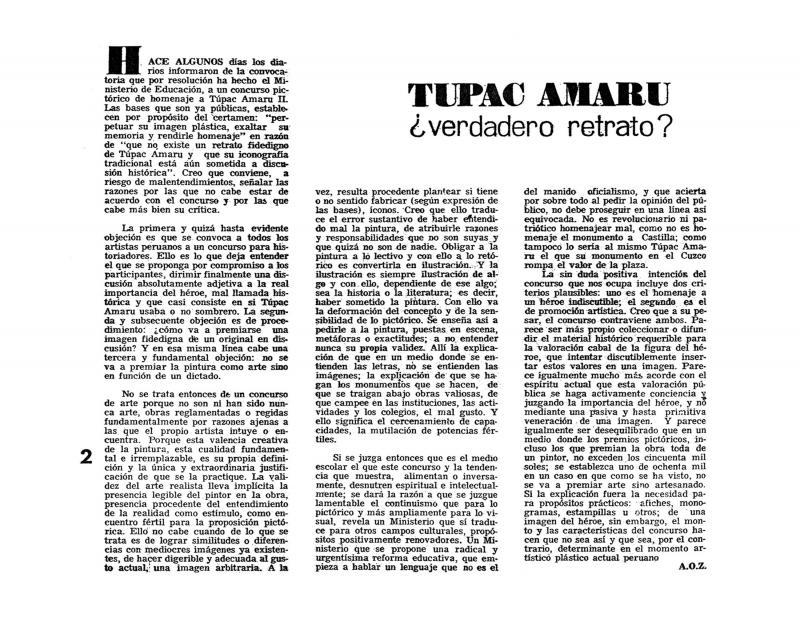This report documents the culminating chapter in a long process. The fourth awarding of this prize was to Joaquín Ugarte y Ugarte (1917–84), an academic sculptor who specialized in patriotic military monuments, but the equestrian work he proposed was never erected in the Plaza de Armas. Some argued that it was not in keeping with the colonial plaza and objected to the fact that the hero, Túpac Amaru II, had been tortured there and dismembered by four horses.
The Decreto Ley 18280, issued on May 19, 1970 [on that subject, see in the ICAA digital archive “Declaran de interés nacional la erección de un monumento a Túpac Amaru en Plaza de Armas, Cuzco” (doc. no. 1139054)], created a competition in order to place the figure of the indigenous forefather in the Plaza de Armas in Cuzco, where he was executed. The competition was one of the most controversial art contests held in Peru in the seventies: the results of each of the three previous contests were annulled. The decree also mandated that a portrait of Túpac Amaru II be placed in all the educational institutions in the country, therefore giving rise to the organization of a painting competition as well, one that was also declared null and void.
[For further reading on Túpac Amaru II, see the following articles in the archive: by General EP Felipe de la Barra “¿Cómo fue Túpac Amaru?” (doc. no. 865441); (unsigned) “Convocan a concurso: monumento a Túpac Amaru se levantará en el Cuzco” (doc. no. 1053438); by Alfredo Arrisueño Cornejo “Convocan a concurso de pintura para perpetuar la imagen plástica del mártir José Gabriel Condorcanqui” (doc. no. 865422), and “Declaran desierto el Concurso de Pintura ‘Túpac Amaru II’” (doc. no. 865498); (unsigned) “En busca de la imagen arquetípica de Túpac Amaru” (doc. no. 865702); by Daniel Valcárcel “El retrato de Túpac Amaru” (doc. no. 1052165); and by A. O. Z. “Túpac Amaru: ¿verdadero retrato?” (doc. no. 865460)].

